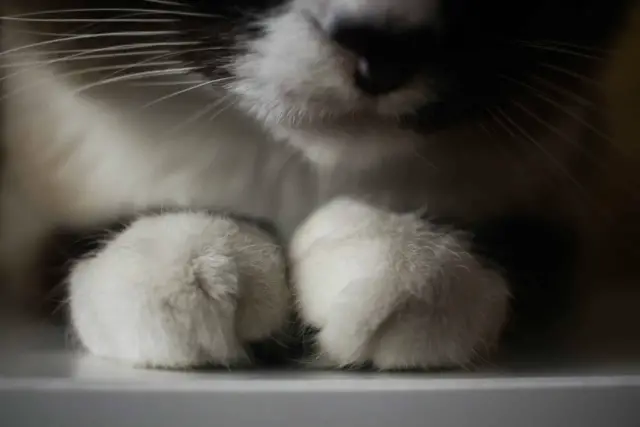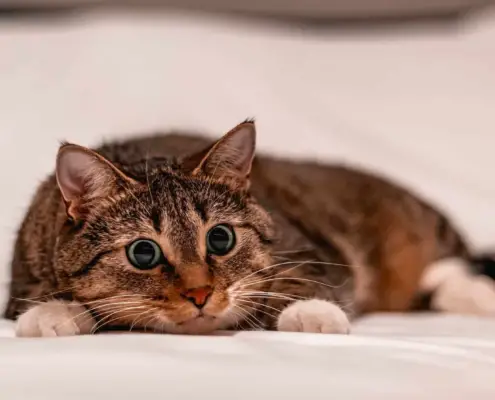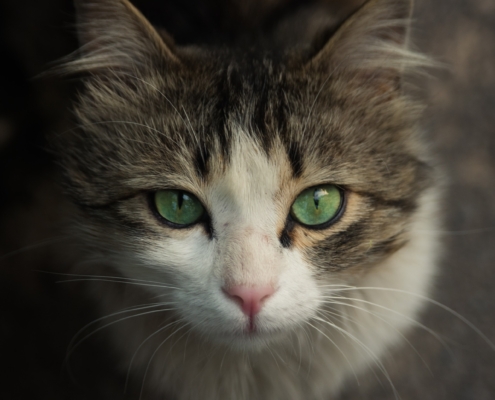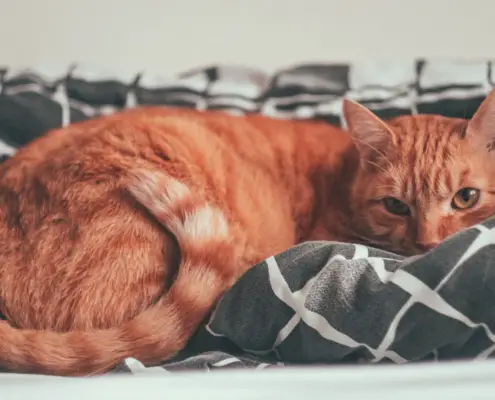
Cat owners know that their feline companions are truly unique creatures. From their mesmerizing eyes to their graceful movements, cats possess a charm that captures our hearts. One of the most fascinating aspects of cats is their paws. These furry appendages are not just cute; they play a crucial role in a cat’s life. Understanding the importance of cat paws can help us appreciate these remarkable creatures even more.
A cat’s paws serve various functions that are vital for their survival. Firstly, their paws act as a tool for hunting. Cats are natural predators, and their paws allow them to sneak up on their prey silently. The soft pads on their paws dampen the sound of their steps, giving them the element of surprise. Additionally, the sharp claws on their paws are essential for catching and holding onto their prey.
Apart from hunting, a cat’s paws also aid in their balance and agility. Cats are known for their incredible acrobatic skills, and their paws contribute to their remarkable balance. Their paws have a high concentration of nerve receptors, which provide them with sensory feedback about the surface they are walking on. This allows them to make split-second adjustments to maintain their stability, even on narrow ledges or uneven terrain.
Anatomy of a Cat Paw
To fully understand the significance of cat paws, it is essential to dive into their anatomy. A cat’s paw consists of several components that work together seamlessly. At the core of a cat’s paw lies the metacarpal pad, which acts as a cushion when the cat walks or runs. This pad absorbs shock and provides extra comfort, allowing the cat to move effortlessly.
Surrounding the metacarpal pad are the digital pads, which are responsible for providing traction. These pads have a rough texture, enabling the cat to grip onto surfaces securely. They are particularly useful when cats climb trees or navigate slippery surfaces.
At the tip of a cat’s paw, we find the claws, which are retractable. This retractable nature allows cats to keep their claws sharp and protected when they are not in use. When a cat needs to use its claws, it can extend them effortlessly. This unique adaptation serves multiple purposes, including self-defense and climbing.
What Cat Paws Can Tell Us
Cats are known for being mysterious creatures, but their paws can reveal a lot about their overall health and well-being. By observing a cat’s paws, we can gather valuable information about their hydration levels, circulation, and potential injuries.
One important aspect to note is the condition of a cat’s paw pads. Dry and cracked paw pads may indicate dehydration or a lack of essential nutrients. On the other hand, excessively moist paw pads can be a sign of excessive sweating or an underlying health issue. Regularly checking and moisturizing a cat’s paw pads can help maintain their overall paw health.
Additionally, a cat’s paw pads can reveal clues about their circulation. Cold or pale paw pads may suggest poor blood flow, while warm and pink paw pads indicate healthy circulation. Monitoring the temperature and color of a cat’s paws can provide insight into their overall health.
How Cats Use Their Paws
Cats are known for their dexterity and agility, and their paws are the key to these remarkable abilities. Cats use their paws for various activities, including hunting, grooming, and communication.
When it comes to hunting, a cat’s paws are their ultimate weapon. Their sharp claws enable them to grasp and immobilize their prey. Cats also use their paws to playfully bat at toys or pounce on objects, which mimics their natural hunting instincts. It is essential for cat owners to provide their feline friends with toys that stimulate their paws and keep them mentally and physically engaged.
Apart from hunting, cats use their paws for grooming purposes. Their rough tongues help to clean their fur, and their paws act as washcloths. Cats lick their paws and then use them to wipe their faces and ears, ensuring that they remain clean and well-groomed.
Cats also communicate through their paws. When a cat kneads its paws against a surface, it is a sign of contentment and relaxation. This behavior is often associated with the memory of their early kittenhood, as they used to knead their mother’s belly to stimulate milk flow. Understanding these subtle paw movements can deepen the bond between cats and their human companions.
Cat Paw Care Tips
Just like any other part of a cat’s body, their paws require regular care and attention. By following a few simple tips, cat owners can ensure that their feline friends’ paws remain healthy and happy.
Firstly, maintaining proper hygiene is crucial. Regularly inspecting and cleaning a cat’s paws can prevent the accumulation of dirt or debris. Gently wiping their paws with a damp cloth can help remove any unwanted substances.
Trimming a cat’s claws is another essential aspect of paw care. Overgrown claws can cause discomfort or lead to ingrown nails. Cat owners should invest in quality nail clippers specifically designed for cats and learn how to trim their claws safely.
Moisturizing a cat’s paw pads is also beneficial. Applying a pet-friendly moisturizer can prevent dryness and cracking. However, it is important to use products specifically formulated for cats, as certain human moisturizers can be harmful to them.
Common Cat Paw Problems and Solutions
Despite the care and attention cat owners provide, cat paw problems can still arise. Being aware of common paw issues and their solutions can help cat owners address them promptly.
One common paw problem is interdigital cysts, which are fluid-filled sacs that form between a cat’s toes. These cysts can cause discomfort and lead to limping. Regularly cleaning the paws and keeping them dry can help prevent the development of interdigital cysts. If they do occur, a veterinarian should be consulted for appropriate treatment.
Another common paw issue is nail overgrowth. Overgrown nails can snag on objects or grow into the paw pad, causing pain and infection. Regular nail trimming can prevent this problem. However, if a cat’s nails have grown too long, it is best to seek professional help from a veterinarian or a groomer.
Cats can also develop allergic reactions on their paws, known as pododermatitis. This condition causes redness, swelling, and itching. Identifying the allergen and providing appropriate treatment, such as antihistamines or topical creams, can alleviate these symptoms.
Fun Facts About Cat Paws
Cat paws are not just functional; they also possess some fascinating characteristics that make them even more intriguing. Here are a few fun facts about cat paws that might surprise you:
- Cats have five toes on their front paws but only four on their back paws. This difference in the number of toes contributes to their exceptional balance and agility.
- Some cats have polydactyl paws, meaning they have extra toes. These cats are often referred to as “Hemingway cats” in honor of the famous writer Ernest Hemingway, who had a fondness for polydactyl cats.
- The pads on a cat’s paw are not just soft; they also contain scent glands. When a cat scratches an object, it leaves behind scent markers, which serve as a form of territorial communication.
- Cats have a unique ability to retract their claws. By retracting their claws, cats can keep them sharp and protected from wear and tear when they are not in use.
The Symbolism of Cat Paws in Different Cultures
Cats have long held a special place in various cultures around the world, and their paws are often associated with symbolic meanings. In ancient Egypt, cats were highly revered, and their paws were seen as a symbol of protection and good fortune. The Egyptian goddess Bastet, often depicted with the head of a lioness or domestic cat, was associated with fertility and protection.
In Japanese culture, the beckoning cat, or Maneki-neko, is a popular talisman believed to bring good luck and fortune to its owner. The cat is depicted with one paw raised, inviting people to come closer. The raised paw is seen as a gesture of welcome and prosperity.
The symbolism of cat paws varies across different cultures, but they are generally associated with attributes such as agility, grace, and independence. Cats’ ability to land on their paws even when falling from great heights has been admired and revered throughout history.
Products for Cat Paw Health and Entertainment
To keep cat paws in optimal condition, various products are available that cater to their health and entertainment needs. From scratching posts to paw balms, these products can enhance a cat’s well-being and provide them with mental and physical stimulation.
Scratching posts are essential for maintaining a cat’s paw health. They allow cats to engage in their natural instinct to scratch while keeping their claws in check. Cat owners can choose from various types of scratching posts, including vertical or horizontal designs, to suit their cat’s preferences.
Paw balms or moisturizers are also beneficial for maintaining soft and healthy paw pads. These products can prevent dryness and cracking, especially during harsh weather conditions. Cat owners should opt for natural and pet-safe ingredients when choosing paw balms.
Interactive toys are another great investment for cat paw health and entertainment. Toys that stimulate a cat’s paws, such as puzzle feeders or treat-dispensing toys, can keep them mentally engaged and prevent boredom. These toys provide an outlet for a cat’s hunting instincts and keep their paws active.
Conclusion
Cat paws are truly remarkable, playing a crucial role in a cat’s life. From hunting to communication, their paws are an essential part of their existence. Understanding the importance of cat paws allows us to appreciate these fascinating creatures even more. By providing proper care, monitoring their health, and investing in products that cater to their paw needs, we can ensure that our feline companions lead happy and healthy lives. So next time you look at your cat’s paws, remember the incredible abilities they possess and the paw-some world they represent.
If you enjoyed my article, I would appreciate you sharing it with your network.

Sima Ndlebe
Sima writes for CatBuzz. He is interested in Cats, Health and Fitness, and Entrepreneurship.
Published: 13 October 2023
Related Articles
Disclaimer
The content found on CatBuzz.org is presented on an "as is" basis and is intended for general consumer information and education purposes only. Any utilization of this information is voluntary and solely at the user's own risk.
None of the articles or content should be regarded as, or used in place of, veterinary medical advice, diagnosis, or treatment. The information provided on the website is purely for educational and informational intentions and should not be considered a substitute for professional guidance from a veterinarian or other qualified expert. The articles are designed to inform consumers about veterinary healthcare and medical matters that may impact their cat's daily life. It should be noted that this website and its services do not constitute the practice of any form of veterinary medical advice, diagnosis, or treatment. CatBuzz.org explicitly disclaims any liability for any direct or indirect damages or losses that may arise from the use of or reliance on the information contained within the content.
Consumers must consult a veterinarian, veterinary specialist, or another qualified veterinary healthcare provider when seeking advice regarding their cat's health or medical conditions. It is important not to ignore, avoid, or postpone seeking medical advice from a veterinarian or other qualified veterinary healthcare provider solely based on information obtained from this website. If you believe that your cat may be experiencing a medical issue or condition, it is imperative to promptly contact a qualified veterinary healthcare professional.




